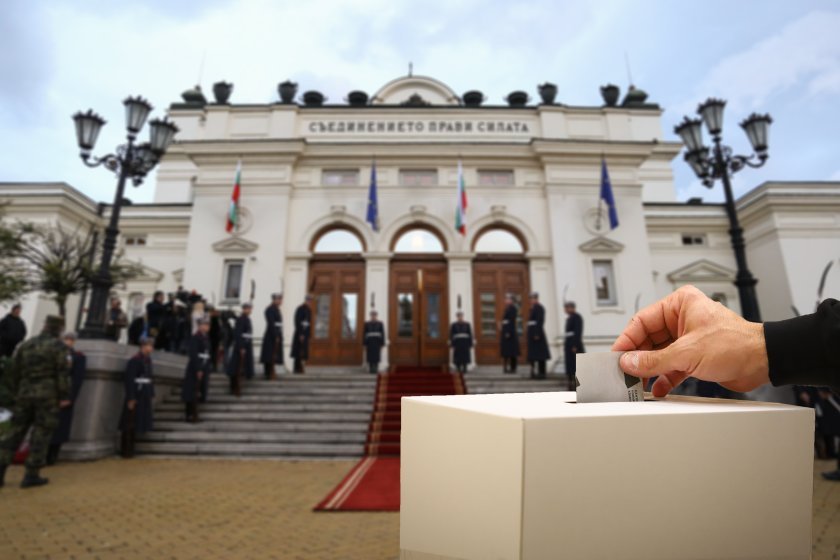
"Gallup International Balkan” on April 3 published the demographic profiles from their exit poll commissioned by the Bulgarian National Television ( BNT), Nova Broadcasting Group, Bulgarian National Radio (BNR) and Investor.bg.
The analysis shows some of the possible first conclusions and hypotheses regarding the sets of votes cast by the Bulgarian voters on the April 2 early parliamentary elections.
With 100% of ballots counted: GERB-UDF wins Bulgaria's April 2 early general elections
The share of "I do not support anyone" is included in the calculations.
How did "Vazrazhdane" party gain about 100,000 new votes?
The votes came mainly from people who previously voted for We Continue the Change (over 30,000) and the rest from people who did not vote in the previous elections (including first-time voters) or who previously voted for GERB or for BSP.
Where did the “We Continue the Change - Democratic Bulgaria” coalition lose votes and not reach its mechanical total from the previous vote?
The 20.7% of the coalition's votes on April 2 came from people who voted for “We Continue the Change” at the previous elections. This is in practice is identical to the party's electorate, i.e. the WCC supporters from the last election are more likely to have gone to the polls again.
The same applies to Democratic Bulgaria, but the proportion here is as low as 6%. On the other hand, however, Democratic Bulgaria supporters voted for WCC-DB in 83% of the cases, while the proportion of those who repeated their choice was slightly lower for the WCC - 76%.
How did the “There is Such a People” step over the 4% electoral threshold?
Some 70,000 supporters of "There Is Such a People" (TISP) repeated their vote for this party from the previous elections. Some 10,000 votes or so came from people who previously voted for “We Continue the Change”.
The increase of "I do not support any one" in absolute votes is visible. As usual, this is a group with a more ambiguous profile, but consists of younger people. Those who voted for “We Continue the Change” before outnumber those who voted for GERB.
As in the October 2 elections, a total of 25.2% made their decision for who to vote for in the last days or on the last day before he elections. This is conventionally about 650,000 people. This type of choice is noticeably present among those who voted for parties such as “Vazrazhdane” and “There is Such a People”, for example.
WCC-DB is the preferred choice for younger voters. GERB-UDF is more popular with the older age groups. Among the young voters, the Movement for Rights and Freedoms traditionally does well. “Vazrazhdane” seems to be more popular with middle-aged voters, while BSP among the elderly.
WCC-DB is the number one choice among university graduates. “Vazrazhdane”, too, has a solid share of supporters among the people with higher education. In Sofia, the WCC-DB coalition clearly defeats GERB. The picture is just the opposite in the villages. The two coalitions contest in the major cities, the analysis says.
Which parties and coalitions are registered for April 02 early general elections?
 The Outgoing Cabinet Appoints Tsanko Bachijski as Head of Nuclear Regulatory Agency
The Outgoing Cabinet Appoints Tsanko Bachijski as Head of Nuclear Regulatory Agency
 Borissov Urges GERB Representatives in Varna Electoral Commission Not to Participate in Attempts to Terminate the Term of Office of Mayor Blagomir Kotsev
Borissov Urges GERB Representatives in Varna Electoral Commission Not to Participate in Attempts to Terminate the Term of Office of Mayor Blagomir Kotsev
 'MRF – New Beginning' Proposes Harsher Penalties for Sexual Offences Against Children
'MRF – New Beginning' Proposes Harsher Penalties for Sexual Offences Against Children
 President Rumen Radev: 'Treti Mart' Movement Has No Connection to Me or the Presidency
President Rumen Radev: 'Treti Mart' Movement Has No Connection to Me or the Presidency
 СЪБИТИЯТА НА 2025: От лев към евро: една година на решения и съмнения
СЪБИТИЯТА НА 2025: От лев към евро: една година на решения и съмнения
 СЪБИТИЯТА НА 2025: Трагедии, които можеха да бъдат предотвратени: Живот на ръба на безхаберието
СЪБИТИЯТА НА 2025: Трагедии, които можеха да бъдат предотвратени: Живот на ръба на безхаберието
 Българският патриарх Даниил и Вселенският патриарх Вартоломей отслужиха Света литургия в Истанбул
Българският патриарх Даниил и Вселенският патриарх Вартоломей отслужиха Света литургия в Истанбул